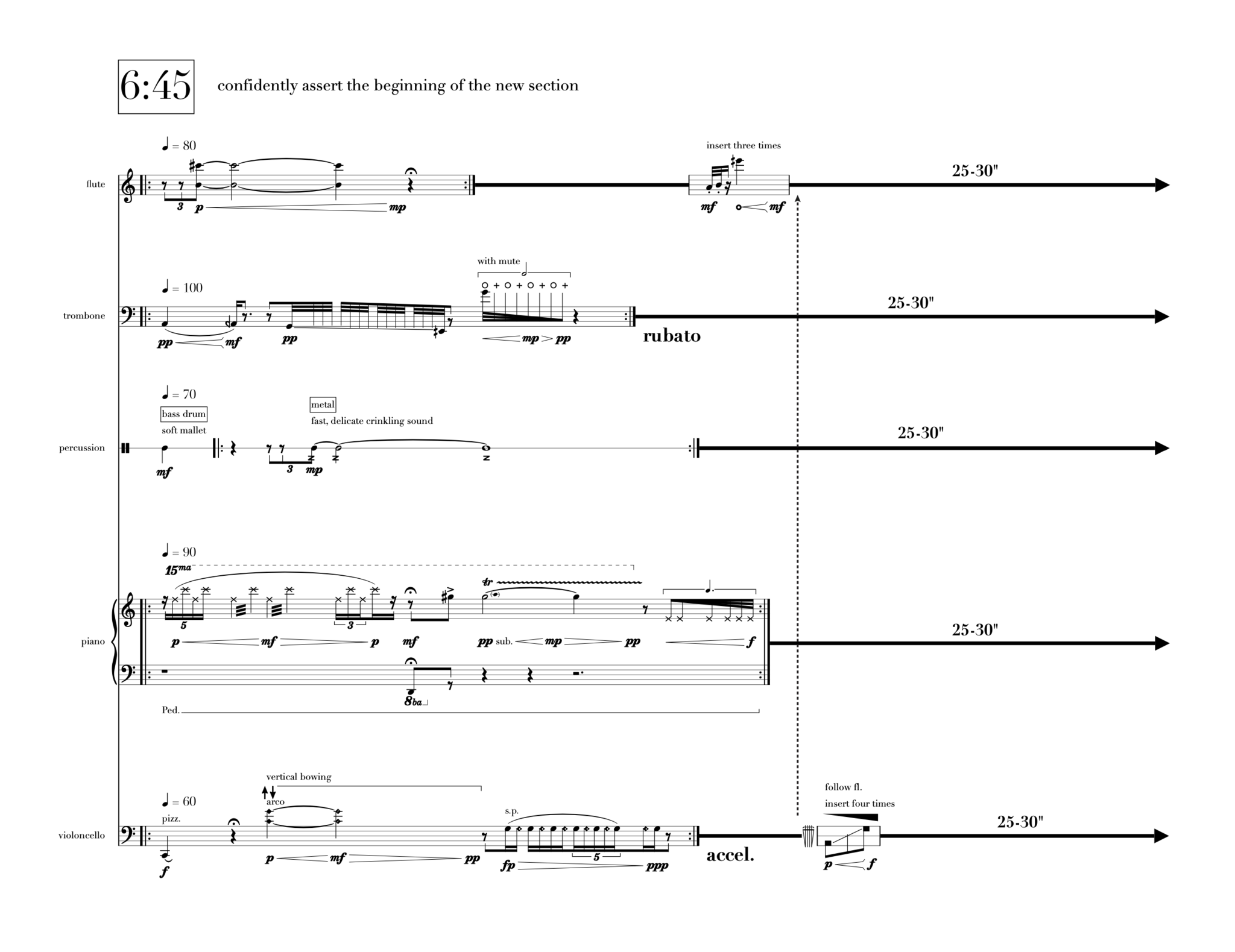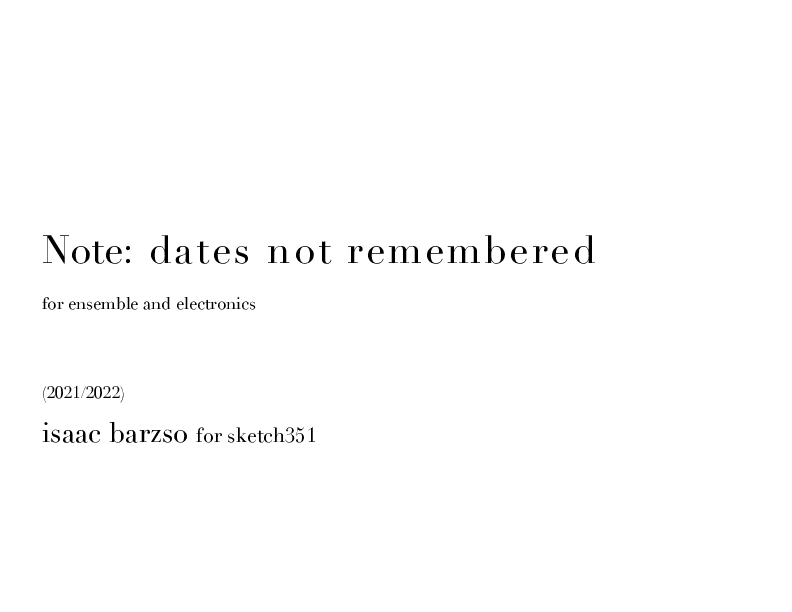This philosophy of sound gathering is a constant thread in my music; I will point to a number of pieces from my time at the Royal Conservatory as examples of how I apply this practice, but perhaps the best starting point is the first piece I wrote in the Netherlands, Date not remembered (2021) for ensemble and electromagnetic field recording (developed in collaboration with ensemble Sketch351 for flute, trombone, cello, piano, and percussion). I hesitate to spend too much time on this piece, as it is not one of my most successful in terms of pacing and structure; however, though I had begun to develop these techniques of interacting with place through technology and performance prior to beginning my study at the Royal Conservatory, Date not remembered is a key moment for me as the first time that I approached composition as sonic placemaking, with its source material governing both form and musical material.
The source material is the recording which is described in this paper’s introduction, a 21-minute and 4-second electromagnetic field recording taken at the Loretto Motherhouse in Kentucky with a $5 telephone pickup microphone. Date not remembered is formally incredibly simple: The recording is played in its entirety and ensemble material is shaped around it, with major moments of interference in the recording serving as structural pillars for the composition. Returning to Tsunoda’s thoughts on depiction is key for the use of the recording as musical material in this piece, which further provides us a straightforward starting point for considering placemaking techniques in compositional practice.
There are two ways in which ensemble material is written in the piece, which can be described — in referring back to Tsunoda’s notion of depiction — as “watching” sections and “portraying” sections. The element of “watching” comes from our relationship as listeners to the recording itself; it is laid out in its entirety, allowing us to literally just sit and experience it as it passes by. During these sections, the ensemble interacts with the material individually and at their own discretion; each player plays these sections from individual parts which contain no reference to the other players, only a selection of notation and timestamps specifying when to play. There is no score for these sections, just possibilities for the players to explore the sonic space and ‘watch’ as the field recording passes by, inviting the audience to do the same.
The rest of the piece’s ensemble material is drawn from spectral analysis of the field recording, converted to notation in my previously mentioned custom-built Max/ MSP application. While also notated in a relatively open fashion, this material is formatted as a score for the ensemble to have more precise interaction with the field recording. This exemplifies my view of “portraying” within the process of sound gathering and sonic extraction. The process of converting spectral analysis to notation is imperfect and doesn’t result in notation that necessarily sounds like the field recording it comes from, instead, the ensemble is playing its own version of the recording which illuminates its qualities in unique and previously unseen ways.
Artistically, I have to acknowledge that Date not remembered is more of a test piece than a work that defines my output1; in some ways, it is too beholden to the form of the field recording to establish its own identity as a composition, with the resulting ensemble music both too active and not active enough in its relationship surrounding the recording to be especially convincing conceptually or as a piece of music on its own. However, its basic concept is an important starting point for this research and establishes a precedent for how my following works have grown and developed. The Loretto coal pit and surrounding community are interacted with from multiple perspectives of acoustic and electronic sound, resulting in a layered and unique experience of reflection.


